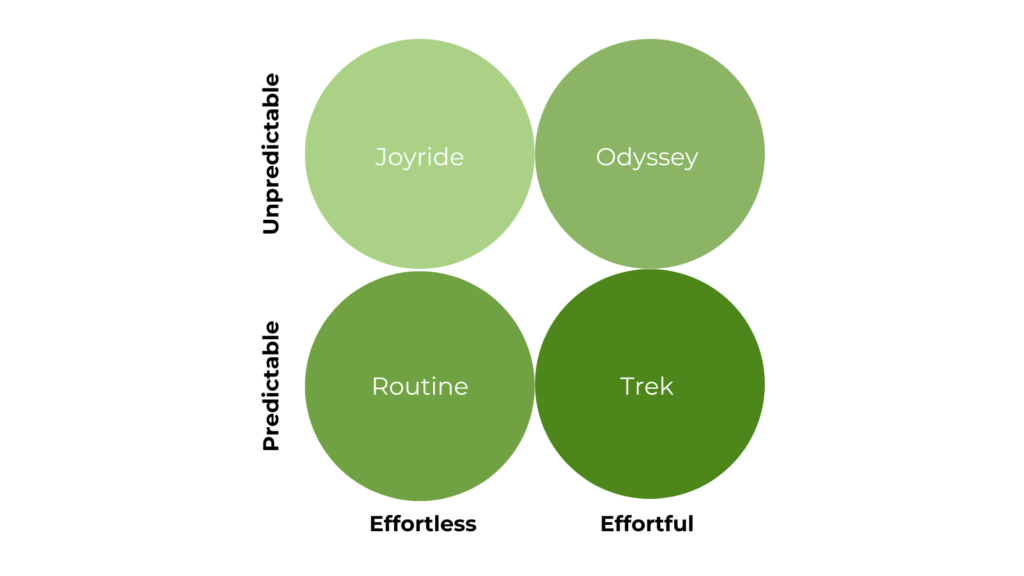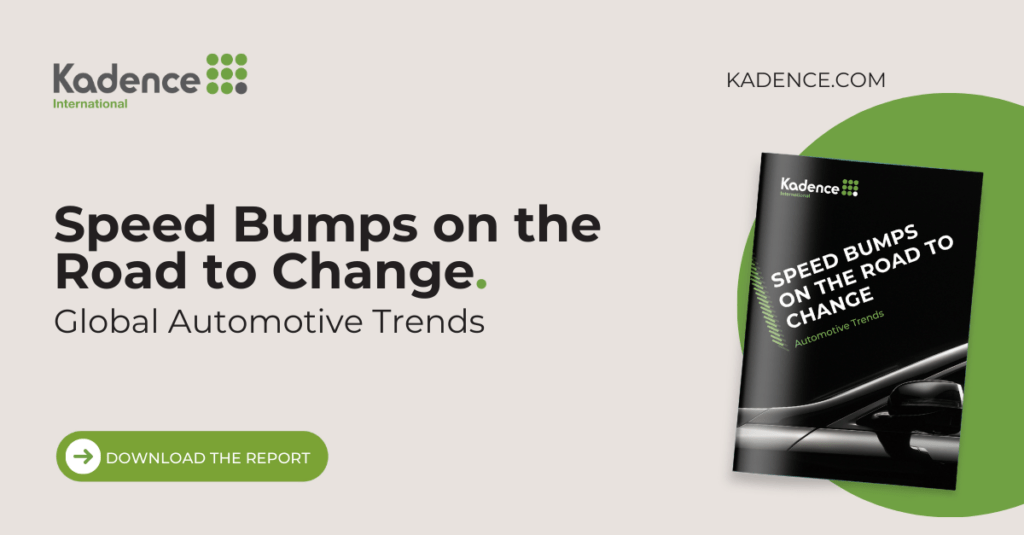Every brand is akin to a ship navigating the ever-changing waves of the market. The captain of this ship, the brand leader, needs a reliable compass to ensure the journey is smooth and successful. This compass? Market research.
Now, you might argue that your intuition or experience is enough, and sometimes, it might be. But relying solely on these can be like navigating treacherous waters with an outdated map.
Staying connected with your target audience isn’t just a business strategy; it’s a necessity. It’s about understanding the heartbeats, emotions, and desires of those you serve. Their feedback, behaviour, and preferences are not just numbers or data points but the very pulse of your brand. And if you’re not frequently checking this pulse, you risk losing touch with what keeps your brand alive.
Market research acts as this routine check-up, ensuring that brands stay healthy, agile, and aligned with what the market truly desires. If you’ve ever felt like you’re shooting in the dark, making decisions based on gut feelings rather than concrete information, or simply feel that unsettling whisper that something might be amiss, it’s high time to consider the telltale signs that market research is overdue.
Telltale Sign #1: Declining Sales Numbers
One of the clearest, most unmistakable signs that a brand might be out of sync with its market is declining sales numbers. Sure, every business encounters occasional fluctuations – that’s just the ebb and flow of commerce. However, a consistent downtrend in sales is a red flag that cannot be ignored.
At the heart of it, sales figures are not just numbers on a ledger; they’re reflections of market alignment. They tell a story about how well a brand’s offerings resonate with consumers. When those figures dip, it’s as if the market is speaking – and it’s essential to listen. As the adage goes, numbers don’t lie. But it’s crucial to understand what they’re really saying.
Consider this: A dip in sales could result from numerous factors. It might be an ineffective marketing campaign, a shift in consumer preferences, increased competition, economic downturns, or even internal issues like supply chain disruptions. Simply noticing a drop in sales and attributing it to a singular reason without a deeper analysis can lead to misguided solutions.
So, how does one delve deeper? That’s where comprehensive market research comes into play. Beyond the surface-level figures, it dives into consumer behaviours, preferences, pain points, and aspirations. For instance, while sales numbers indicate that a particular product isn’t selling well, market research reveals that the product’s features are outdated or its marketing isn’t reaching the intended audience.
While declining sales figures serve as a wake-up call, market research is the magnifying glass that brings the underlying issues into focus. Without this more profound insight, brands risk putting bandaids on bullet wounds, addressing symptoms rather than root causes.
Declining sales are not just a sign of current misalignment; they’re a warning of potential future pitfalls. Recognising them for what they are and leveraging market research to decode their true message is the first step in realigning, evolving, and ensuring the brand’s continued relevance and success.
Telltale Sign #2: Negative Social Media Feedback
Social media has not only revolutionised how we communicate but also how businesses receive feedback. Platforms like X, TikTok, Instagram, and Facebook have become modern-day town squares where customers voice their praise, concerns, and criticisms.
For brands, this means immediate, unfiltered insights into their performance. And among the most telling signs that a reevaluation is in order? A surge in negative social media feedback.
Interpreting Social Media as Real-Time Feedback
Imagine if every time a customer had a concern or grievance, they could walk directly into the CEO’s office and voice it. That’s the kind of direct line social media provides. Unlike traditional feedback mechanisms, which could take weeks or even months to process, social media listening offers real-time insights.
A product launch gone wrong can generate immediate reactions; a misjudged advertisement can be called out within hours. This immediacy is a double-edged sword. On the one hand, brands can swiftly address concerns, rectify mistakes, and show customers they’re listening. On the other hand, unchecked negative feedback can quickly snowball, potentially damaging a brand’s image substantially.
The Risks of Overlooking Online Sentiments
On the internet, word spreads fast. A negative review can reach hundreds, thousands, or even millions in hours. Platforms like X have made viral moments commonplace, and while many brands aim for virality, being on the receiving end of widespread criticism is a scenario no brand wishes for.
Ignoring or downplaying negative feedback can be perilous. It can give customers the impression that the brand is indifferent to their concerns, leading to further alienation. What’s more, potential customers often rely on online reviews and feedback when making purchasing decisions.
Beyond the immediate impact on reputation and sales, negative feedback can also hint at deeper underlying issues with a product, service, or the brand’s messaging. Overlooking these sentiments means missing opportunities to refine, adapt, and better serve the target audience.
Negative social media feedback is more than just a digital echo; it’s a clarion call for introspection, action, and engagement. Brands that tune into this feedback, analyse its roots, and act accordingly mitigate risks and fortify their relationship with their audience.
Telltale Sign #3: Increased Customer Churn
Attracting a customer is like wooing a potential partner. You put on your best, make promises, and hope for a connection. But what happens once that connection is established? Just like in relationships, in business, the effort shouldn’t end with acquisition. If brands find their customers frequently moving on after a short stint, it’s a glaring sign: increased customer churn.
Why Retaining Customers is More Cost-Effective Than Acquiring New Ones
It’s an often-quoted maxim in business, but it bears repeating: acquiring a new customer can cost five times more than retaining an existing one.
Why? Think of the expenses tied to acquisition: advertising, promotions, discounts, and the operational costs of reaching and onboarding new customers.
These are all upfront investments made in the hope that a customer will stick around long enough to offer a return on this investment.
On the other hand, retaining customers relies on building and maintaining a strong relationship. Loyal customers are not only easier on the pocketbook in terms of retention costs, but they’re also more likely to make repeat purchases, potentially at higher values. They become brand ambassadors, offering both priceless and free word-of-mouth advertising.
Loyal customers also provide invaluable feedback, helping brands fine-tune their offerings. Their continuous engagement creates a stable revenue stream, allowing businesses to plan with more certainty and foresight.
The Role of Market Research in Understanding Churn
But what causes churn? Is it pricing, product dissatisfaction, better offers from competitors, or something more intangible, like a disconnect with the brand’s values? Herein lies the power of market research.
Market research delves deep into the reasons behind customer churn. Through surveys, focus groups, and in-depth analytics, it uncovers patterns and sentiments that may not be immediately apparent. For example, while a brand might think that a price hike led to increased churn, market research might reveal that customers were willing to pay more but felt the brand’s post-purchase support was lacking.
Predictive analytics, a subset of market research, can identify potential churn before it happens. By analyzing data trends, brands can pinpoint which customers are at risk of leaving and proactively address their concerns.
Customer churn isn’t just a metric; it’s a narrative about a brand’s relationship with its audience. It offers a candid reflection of where a brand stands in its customers’ eyes. By addressing the root causes of churn, brands boost their bottom line and forge deeper, more enduring connections with their clientele.
Telltale Sign #4: Ineffectual Marketing Campaigns
When it comes to marketing, standing out is both an art and a science. Brands pour immense creative and financial resources into crafting the perfect marketing campaigns. Yet, even the most visually stunning and conceptually brilliant campaigns can fall flat. When those intricately designed messages fail to resonate or, worse, go unnoticed, it’s not just a financial setback; it’s a signal that something might be fundamentally misaligned.
When Good Campaigns Go Unnoticed: The Disconnect
Imagine crafting what you believe is the perfect message, only to find out it’s being broadcast in a language your audience doesn’t speak. That’s the kind of disconnect we’re discussing here. An ineffectual campaign isn’t necessarily a bad one.
It could be targeting the wrong audience, utilising platforms that don’t align with the brand’s demographics, or conveying a message that’s no longer relevant to the consumer’s current mindset.
This disconnect could arise from various factors:
- Cultural Missteps: In trying to be globally relevant, a brand might inadvertently overlook local sensitivities or nuances.
- Platform Mismatch: Using platforms that aren’t frequented by the target audience, such as advertising youth-oriented products on platforms popular with older demographics.
- Temporal Lag: When a campaign rolls out, market sentiments have shifted, making the message outdated or irrelevant.
The Role of Market Research in Campaign Effectiveness
This is where market research shines as an essential tool in a marketer’s arsenal. Before a campaign’s launch, market research can provide insights into the pulse of the target audience: their current preferences, behaviour, and aspirations.
- Audience Segmentation: Through data analytics, brands can get a clearer picture of their audience, allowing for more targeted and personalised campaigns.
- Testing and Feedback: Concepts, messages, and even entire campaigns can be tested on a smaller scale or within focus groups to gauge reactions and refine the approach.
- Competitive Analysis: Understanding what competitors are doing can provide insights into potential market gaps or over-saturated areas.
Moreover, after a campaign’s launch, market research can measure its effectiveness. This isn’t just about ROI in terms of sales but also metrics like brand recall, sentiment analysis, and engagement rates. If a campaign isn’t resonating as expected, timely feedback can allow for course correction.
Marketing in today’s dynamic landscape isn’t just about broadcasting a message; it’s about fostering a conversation. When brands notice their campaigns going unheard, it’s crucial to ask, “Are we truly listening to our audience?” With comprehensive market research, not only can brands speak, but they can also ensure their messages echo in the hearts and minds of their consumers.
Telltale Sign #5: Your Competitors are Outperforming You
In the grand theatre of the marketplace, brands often jostle for the spotlight. It’s an environment where success isn’t just measured by one’s own achievements, but also in relation to peers and competitors. When competitors consistently outperform a brand—be it in sales, market share, customer engagement, or innovation—it’s more than a mere bruise to the ego. It’s a flashing sign that there’s an urgent need for introspection and realignment.
Keeping an Eye on Competitor Moves and Understanding Market Dynamics
The business realm is not static; it’s a dynamic and evolving ecosystem where companies are continually adapting, innovating, and strategising. If a competitor is consistently securing more market share or garnering more engagement, it’s crucial to discern why. Are they offering a groundbreaking product? Have they refined their marketing strategy to resonate more deeply with the audience? Or perhaps they’ve nailed a seamless customer experience that keeps consumers coming back?
Understanding these dynamics isn’t about copying competitors but about gaining a holistic view of the market’s landscape. It provides context, helping brands ascertain their own strengths and weaknesses in the larger scheme of things.
How Market Research Gives Insights into Competitors’ Strategies
Competitive intelligence, a critical facet of market research, zeroes in on this very aspect. It’s not corporate espionage but a legitimate and ethical way to gather, analyse, and leverage information about competitors for better strategic decision-making.
Here’s how market research aids in this:
- Benchmarking: Compare your brand’s performance metrics with industry standards or direct competitors. This gives a clearer picture of where you stand.
- Product Comparisons: By studying reviews, feedback, and customer sentiments, brands can understand what features or offerings of competitors are particularly appealing or lacking.
- Analyzing Marketing Channels: Determine where competitors are investing their marketing efforts. Are there platforms or mediums your brand is overlooking?
- Pricing Strategies: Gain insights into how competitors are pricing their products and services. Are they using a penetration pricing strategy to gain market share, or is a premium pricing tactic bolstering their brand image?
- Innovation Trends: Monitor competitors’ patent filings, research publications, or product launch events to gauge their innovation trajectory.
Armed with these insights, brands can make informed decisions, whether it’s refining a product, reconsidering pricing, reshaping marketing strategies, or even redefining the brand’s entire value proposition.
Being outperformed by competitors is a clear signal to reevaluate and evolve. Yet, it’s also an opportunity—a chance to learn, adapt, and reposition. With market research as the guiding compass, brands can navigate this competitive terrain with clarity and purpose, charting a path to renewed success.
Telltale Sign #6: Lack of New Customer Acquisition
Every brand, regardless of its current success or market leadership, thrives on growth. It’s the lifeblood of business, indicating not just profitability, but relevance, adaptability, and potential for future expansion. However, when a brand observes a plateau or decline in its rate of new customer acquisition, it’s akin to an alarm bell signaling that something needs urgent attention.
The Challenges and Costs Associated with Stagnant Growth
A steady influx of new customers is not merely a sign of a brand’s appeal; it’s a buffer against unforeseen market shifts. Here’s why stagnant growth in customer acquisition can be worrisome:
- Financial Strain: Without new customers, revenue can take a hit. With fixed costs remaining constant, profitability may dwindle.
- Brand Relevance: A slowdown may indicate that the brand is no longer resonating with the evolving tastes and needs of the market.
- Dependency Risk: Relying heavily on existing customers makes a brand vulnerable. Any change in their behaviour or preferences can have a disproportionate impact.
- Innovation Stagnation: A consistent stream of new customers often brings fresh perspectives, feedback, and demands, which can spur innovation. Without this, brands might become complacent.
Using Market Research to Discover New Segments and Opportunities
Before diving into corrective actions, it’s imperative to understand the root cause of the stagnant growth. This is where market research becomes invaluable.
- Audience Profiling: Comprehensive research can help brands determine if they’ve saturated their existing target market. Are there untapped demographics or psychographics that the brand can appeal to?
- Geographical Expansion: Sometimes, the answer lies in new territories. Market research can identify regions or countries where there’s a potential demand.
- Trend Analysis: By keeping a finger on the pulse of industry trends, brands can anticipate and cater to emerging demands. For instance, a surge in eco-consciousness might prompt a brand to explore sustainable products or practices.
- Product/Service Diversification: Research might uncover needs within the market that aren’t adequately addressed. This could be an avenue for brands to diversify their offerings.
- Customer Journey Mapping: Understanding the touchpoints and barriers in a customer’s journey can provide insights into where potential customers might be dropping off.
In essence, while a lack of new customer acquisition can seem daunting, it’s also an invitation for brands to reassess, reinvent, and reinvigorate their strategies. With the right market research, brands can uncover new pathways to engage, attract, and delight customers, ensuring sustained growth and longevity in the market.
Telltale Sign #7: Your Product Development Feels Like Guesswork
In B2C, product development is a pivotal move. It represents a significant investment, both in terms of time and resources. But what happens when this crucial step feels less like a strategic manoeuvre and more like a shot in the dark? When product development begins to resemble guesswork, it’s a glaring indication that the brand might be disconnected from its audience.
Importance of Aligning Product Development with Market Needs
At its core, product development isn’t about creating something novel or innovative; it’s about addressing specific needs or desires within the market. Here’s why this alignment is paramount:
- Optimised Resource Utilisation: Misaligned products can lead to wasted resources in development, production, marketing, and after-sales support.
- Enhanced Market Reception: Products tailored to market demands often see swifter adoption rates and better customer satisfaction scores.
- Strengthened Brand Reputation: Consistently delivering products that resonate with the audience cements a brand’s image as consumer-centric and responsive.
- Reduced Risk: The inherent risks associated with product launches decrease by basing development on informed insights rather than hunches.
How Research Guides Product Innovation
Market research acts as a compass in the often murky waters of product development, offering direction and clarity. Here’s how:
- Need Identification: Through surveys, focus groups, and feedback analysis, brands can unearth latent or overt needs within their target market. It’s about finding the gaps that your product can fill.
- Prototyping & Testing: Before full-scale production, market research can aid in testing prototype products or concepts within select groups, garnering early feedback and refining the final product.
- Competitive Analysis: Researching competitor offerings can reveal strengths to emulate or weaknesses to capitalise on.
- Trend Forecasting: By monitoring industry trends and broader cultural shifts, brands can anticipate future demands. For instance, the rise in remote working could prompt tech companies to develop more home-office-friendly products.
- Pricing Strategy: Market research can provide insights into what customers are willing to pay, aiding in devising a pricing strategy that balances profitability with market appeal.
Product development should never be a game of dice, leaving outcomes to chance. Through meticulous market research, brands can ensure that each product is a calculated step towards fulfilling consumer needs, propelling the brand forward in its market journey. When product development is rooted in deep understanding, guesswork transforms into strategic foresight, setting the stage for sustained success.
Telltale Sign #8: Employees are Disconnecting
Companies often become so engrossed in external dynamics—be it customers, competitors, or market shifts—that they overlook a critical component of their ecosystem: their employees. A brand isn’t just its products, marketing campaigns, or sales figures; it’s fundamentally built on the collective efforts of its people.
When employees feel disconnected or disengaged, it’s not merely an HR concern but a potential harbinger of more significant market misalignments.
The Correlation Between Employee Satisfaction and Market Success
Employees are a brand’s ambassadors, front-liners, and, often, its innovators. Their engagement and satisfaction play pivotal roles:
- Productivity & Quality: Engaged employees often exhibit higher productivity levels and are committed to maintaining quality standards, directly influencing customer satisfaction.
- Brand Representation: Employees represent the brand, both on and off duty. Their genuine belief in the brand’s vision and values can foster authentic interactions with customers, partners, and stakeholders.
- Innovation: When employees feel connected and valued, they’re more likely to contribute ideas, driving innovation that resonates with market demands.
- Retention & Recruitment: High employee turnover can be costly and disruptive. Conversely, satisfied employees stay longer and can become magnets for fresh talent, bringing in new perspectives and skills.
Using Market Research to Bridge Internal Gaps
At first glance, market research might seem like an external-facing tool, but it holds immense value in understanding and bridging internal challenges:
- Employee Surveys: Regular feedback mechanisms can capture employee sentiments, concerns, and suggestions, helping organisations identify areas of improvement.
- Training Needs Analysis: Market research can pinpoint areas where employees feel inadequately equipped, paving the way for targeted training programs.
- Benchmarking: By comparing with industry standards or competitor practices, organisations can gauge where they stand regarding employee satisfaction and engagement.
- Feedback Integration: Encourage employees to provide feedback on market trends they observe or customer sentiments they encounter. Their on-ground insights can be invaluable.
- Cultural Assessment: Dive deep to understand the prevailing corporate culture. Is it aligned with the brand’s market positioning? For instance, a brand promoting innovation externally should foster a culture of creativity and openness internally.
The disconnect of employees isn’t just an internal alarm—it’s a market signal. Their disengagement can reflect broader misalignments between a brand’s internal practices and market positioning. Leveraging market research to address these internal gaps bolsters employee engagement and strengthens a brand’s market stance. In business, employees aren’t mere cogs; they’re vital nodes. Ensuring their connection is key to a brand’s holistic success.
Telltale Sign #9: You’re Unsure About International Expansion
International expansion is often viewed as the next logical step for thriving brands. However, venturing into uncharted waters without a map can be risky. The apprehension surrounding global market exploration isn’t merely about unfamiliar terrain—it’s about understanding and adapting to the kaleidoscope of cultures, consumer behaviours, regulations, and market dynamics. Here lies the essential question: How do you make a mark without making a misstep?
Navigating Global Markets and Cultural Nuances
The world isn’t just a physical expanse; it’s a mosaic of myriad cultures, beliefs, preferences, and traditions. As a brand considers international growth, understanding these facets becomes crucial:
- Cultural Sensitivity: What’s appealing in one country might be a faux pas in another. From advertising campaigns to product formulations, cultural considerations are paramount.
- Consumer Behavior: Buying patterns, brand loyalties, and consumption habits can vary starkly across regions. While online shopping might be the norm in one place, another might still rely heavily on brick-and-mortar establishments.
- Regulatory Landscape: Each country has its own set of regulations, standards, and legalities surrounding business operations, product approvals, and marketing. Navigating these without missteps is essential.
- Local Competition: Understanding local competitors, their strengths, strategies, and market positions can offer invaluable insights when crafting a market entry strategy.
The Indispensable Role of Research in Global Strategies
Walking into the global arena blindfolded is a recipe for setbacks. Research isn’t just recommended; it’s indispensable:
- Market Feasibility Studies: Before any move, gauge the feasibility of the new market. Is there a demand for the product or service? Who are the competitors, and what gaps exist in the current offerings?
- Cultural Assessments: Dive deep into cultural studies to tailor offerings. This might involve altering product features, tweaking advertising narratives, or even changing brand colours to resonate locally.
- Regulatory Analysis: Detailed studies can ensure the brand remains compliant with all local regulations, avoiding costly oversights or legal ramifications.
- Localisation Strategies: Beyond just translating content, research can guide localisation efforts—adapting products, services, and communications to the tastes and preferences of the local audience.
- Partnership Opportunities: Market research can identify potential local partners, distributors, or collaborators who can provide support and insights for successful market entry.
To put it simply, international expansion isn’t just about exporting a product or service—it’s about transplanting a brand ethos so that it takes root and thrives in new soil. This transplantation, fraught with challenges, is made infinitely smoother with the scalpel of meticulous research. In the quest for global growth, market research isn’t a mere tool; it’s a compass, a guide, and often, a saviour.
Telltale Sign #10: Your Brand Image is Undefined or Dated
Every brand has a story, an identity that distinguishes it from the vast sea of competitors. But as times change and markets evolve, brands that remain stagnant risk fading into obsolescence. When a brand’s image feels ambiguous, outdated, or doesn’t resonate with its target audience, it’s not just an aesthetic or communicative concern—it’s a warning bell that the brand might be losing its relevance.
Recognising When It’s Time for a Brand Refresh
A brand’s image is its fingerprint, its unique identifier. Here are a few signs that this fingerprint might be smudging:
- Disconnected Messaging: If your brand’s message no longer resonates with your intended audience or seems out of touch with current market realities, it’s a sign of misalignment.
- Changed Market Dynamics: Shifts in market demographics, the emergence of new competitors, or evolving industry trends can make a once-relevant brand seem out of place.
- Dwindling Engagement: Declining metrics on social media engagement, website traffic, or customer feedback indicate a diminishing brand connection.
- Visual Staleness: If your logo, colour scheme, or visual assets seem reminiscent of a bygone era, they might be due for an update.
Using Market Research to Guide Rebranding Efforts
A successful rebrand isn’t about merely changing logos or taglines—it’s a strategic pivot, informed and directed by concrete insights:
- Audience Analysis: Understand your current audience’s perceptions, desires, and pain points. Are they still your target, or has your core demographic shifted?
- Competitive Benchmarking: Analyse competitors’ branding strategies. What elements are working for them? This isn’t about emulation but about understanding market standards and expectations.
- Trend Forecasting: Identify emerging industry trends. Whether it’s a move towards sustainability, digital integration, or community engagement, align your brand with the future.
- Visual Testing: Before finalising visual elements like logos or colour schemes, test them within focus groups or select audiences. This ensures the new visuals resonate and evoke the desired emotions.
- Feedback Loops: Post-rebranding, continue monitoring audience feedback. It provides insights into how well the new brand identity is being received and offers avenues for course correction.
Much like living organisms, brands must evolve to remain vibrant and relevant. An outdated or vague brand image doesn’t just affect aesthetics—it impacts market perception, trust, and, ultimately, the bottom line.
Using market research as the North Star, brands can navigate the complex journey of rebranding, ensuring that their new identity is not only contemporary but also deeply resonant with their audience’s aspirations and needs. In the dynamic world of branding, adaptation isn’t just key—it’s survival.
Final Thoughts
Market research is not a one-off venture or a luxury reserved for industry titans—it’s the lifeblood of forward-thinking businesses in today’s rapidly shifting marketplace. The insights garnered from diligent research are the threads that weave together the fabric of a brand’s existence, guiding its decisions, shaping its strategies, and fortifying its relevance.
The compounded value of regular market research is undeniable. Each research endeavour builds upon the last, creating a rich tapestry of insights that reflect the current market landscape and anticipate its undulations. This proactive approach, driven by continuous learning, sets successful brands apart from the rest.
But, understanding the value of market research is just the beginning. Action is the real game-changer. It’s akin to recognising the importance of saving for retirement; understanding is commendable, but it’s the act of saving that truly secures one’s future. Similarly, recognising the need for market research without integrating its insights into your strategies is like having a map but not embarking on the journey.
To truly harness the transformative power of market research, brands need a partner that understands the intricacies of the market, the nuances of consumers, and the art of translating data into actionable strategies. Kadence International, with its global expertise and commitment to delivering clarity, can be that partner.
So, as we reflect on the telltale signs that herald the need for market research, let’s not just stop at recognition. Let’s take proactive steps rooted in expert insights to navigate today’s market and shape tomorrow’s.
Your brand’s future is unwritten, filled with untapped potential and possibilities. With Kadence International by your side, let’s pen a narrative of success, growth, and unparalleled market resonance. Take the step today to secure your brand’s legacy for tomorrow.
Body copy
Stay ahead
Get regular insights
Keep up to date with the latest insights from our research as well as all our company news in our free monthly newsletter.
![]()












 Senior Marketing Executive
Senior Marketing Executive Sales & Marketing
Sales & Marketing General Manager PR -Internal Communications & Government Affairs
General Manager PR -Internal Communications & Government Affairs Vital Strategies
Vital Strategies
 Customer Intelligence Director
Customer Intelligence Director